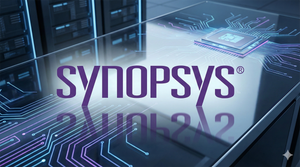
NEW YORK, NY – November 20, 2025 – In a significant shift signaling growing investor apprehension, the credit-default swap (CDS) market for Oracle Corporation (NYSE: ORCL) has experienced an unprecedented explosion in activity. This surge is being widely interpreted across financial markets as the emergence of a crucial 'hedge against an AI crash,' reflecting a deepening skepticism about the financial sustainability and stability of the rapidly expanding artificial intelligence sector. The dramatic increase in the cost to insure Oracle's debt highlights a new era of caution, where the immense capital requirements and uncertain return timelines of AI infrastructure investments are prompting a critical re-evaluation of corporate balance sheets.
The immediate significance of this development is profound. While the AI boom has been characterized by widespread optimism and soaring valuations, the robust activity in Oracle's CDS market suggests that a segment of the financial world is now actively preparing for potential downside risks. This isn't merely a bet against Oracle, but rather a strategic maneuver to protect against broader market volatility and credit deterioration that could arise if the AI sector's aggressive growth trajectory encounters significant headwinds.
Unpacking the Financial Mechanism: Credit-Default Swaps and Oracle's AI Gambit
Credit-default swaps (CDS) are financial derivatives that function much like an insurance policy against the default of a borrower's debt. In a CDS contract, a protection buyer makes regular payments (the "CDS fee" or "spread") to a protection seller. In return, if a predefined "credit event"—such as bankruptcy or failure to make payments by the reference entity—occurs, the seller compensates the buyer for the losses. A wider CDS spread indicates a higher perceived likelihood of a credit event, reflecting lower investor confidence in the borrower's credit quality.
The surge in Oracle's five-year CDS spread has been particularly striking. Reports indicate a climb to nearly 80 basis points by November 2025, a substantial increase from approximately 55 basis points earlier in the year, with some peaks reaching as high as 1.11% annually. The trading volume for Oracle's credit derivatives has also skyrocketed, reaching an estimated $5 billion within a mere seven weeks, a stark contrast to just over $200 million a year ago. This dramatic rise marks the steepest climb in Oracle's CDS spreads since late 2023.
This heightened CDS activity is directly linked to Oracle's aggressive, debt-financed expansion into artificial intelligence infrastructure. The company is undertaking massive AI-driven initiatives, including a planned $38 billion debt issuance to fund new cloud data centers across the United States. Oracle is also a key player in the ambitious Stargate project, a $500 billion collaborative effort with OpenAI and SoftBank Group to build foundational AI infrastructure. Analysts project Oracle's net adjusted debt could soar to around $290 billion by fiscal year 2028, nearly tripling from its current levels of approximately $100 billion. The market views this substantial borrowing as a significant increase in Oracle's leverage risk, prompting investors and bondholders to acquire CDS as a form of insurance against potential financial strain.
Competitive Implications and Market Repositioning in the AI Arena
The explosion in Oracle's CDS market sends a clear signal across the AI industry, impacting tech giants and startups alike. While Oracle (NYSE: ORCL) is strategically positioning its Cloud Infrastructure (OCI) as a cornerstone for AI, attracting major players like OpenAI, xAI, Meta, Nvidia (NASDAQ: NVDA), and AMD (NASDAQ: AMD) with promises of high-performance and cost-efficient GPU superclusters, the market's reaction suggests a growing scrutiny of the financial models underpinning such ambitious projects.
For companies heavily invested in AI infrastructure, this development highlights the critical importance of balancing aggressive growth with financial prudence. The sheer scale of capital expenditure required—with Oracle's projections exceeding $35 billion in the current fiscal year and potentially peaking above $60 billion in fiscal year 2028—is unprecedented. This level of spending is expected to significantly widen Oracle's free operating cash flow deficit, prompting S&P Global Ratings to assign a negative outlook to Oracle's 'BBB' long-term issuer credit rating. JPMorgan and Barclays have also downgraded Oracle's credit ratings, citing substantial capital needs and a high debt-to-equity ratio, with Barclays warning that Oracle's credit rating could approach junk bond status.
This shift in market sentiment could lead to a re-evaluation of competitive strategies. Companies that rely heavily on debt to fund AI expansion might face higher borrowing costs or increased difficulty in securing financing, potentially slowing their build-out plans. Conversely, tech giants with robust balance sheets and diversified revenue streams, such as Microsoft (NASDAQ: MSFT) or Amazon (NASDAQ: AMZN), might find themselves in a stronger competitive position, able to weather potential market volatility and continue their AI investments without facing similar credit concerns. The market is now clearly signaling that while AI offers immense potential, the financial execution of its infrastructure build-out is paramount.
The Wider Significance: An AI Bubble Check?
The activity surrounding Oracle's CDS is more than just a company-specific event; it serves as a critical barometer for the broader AI landscape and ongoing trends. It introduces a note of financial realism into a sector often characterized by euphoric valuations and boundless optimism. Concerns about an "AI bubble" have been voiced by various analysts and financial leaders, drawing parallels to the dot-com era. The surge in Oracle's CDS suggests that these concerns are now translating into tangible hedging strategies.
This phenomenon fits into a broader narrative of uncertainty surrounding the returns on massive capital spending in AI. Trillions are being poured into data centers and advanced infrastructure, yet questions persist about how quickly these investments will translate into widespread productivity gains and profitable "killer applications." If the anticipated revenue growth from AI fails to meet expectations, the substantial debt taken on by companies like Oracle could become a significant burden.
Furthermore, the current AI rally exhibits concentration risk, with much of the market's gains attributed to a few "Magnificent Seven" tech companies. This narrow leadership can lead to increased market volatility and abrupt corrections. Oracle, given its central role in providing foundational AI infrastructure and its interconnectedness with key AI players, has effectively become a "canary in the AI investment coal mine." Its CDS performance is now being closely watched as a proxy for the financial health of the broader AI infrastructure boom, highlighting systemic risks such as "circular financing" among industry giants and potential counterparty risks, as evidenced by reports of partners like OpenAI struggling with large deal obligations.
Future Developments: A Landscape of Scrutiny and Strategic Shifts
Looking ahead, the emergence of a 'hedge against AI crash' through instruments like Oracle's CDS suggests several expected near-term and long-term developments. Firstly, there will likely be increased scrutiny of the balance sheets and debt profiles of all companies making significant, capital-intensive bets in the AI sector. Investors will demand greater transparency and clearer pathways to profitability for these massive investments. The cost of borrowing for AI infrastructure projects could rise, and access to capital might become more selective, especially for companies with already leveraged positions.
In the long term, this market signal could prompt a strategic shift among AI companies. While the race for AI dominance will continue, there may be a greater emphasis on sustainable growth models, efficient capital deployment, and demonstrating tangible returns on investment rather than solely focusing on market share or technological breakthroughs. Potential applications and use cases for AI will need to prove their economic viability more quickly to justify the upfront costs. Challenges that need to be addressed include managing escalating debt in a high-interest rate environment, mitigating counterparty risks with key AI partners, and ensuring that the demand for AI services can keep pace with the rapidly expanding supply of infrastructure.
Experts predict that the market will continue to differentiate between companies that can effectively monetize their AI investments and those that struggle. This could lead to a consolidation in the AI infrastructure space, with stronger, more financially robust players absorbing or outcompeting those facing credit pressures. The coming months will be crucial in observing how Oracle manages its burgeoning debt and how the profitability of its AI initiatives unfolds, setting a precedent for the wider industry.
Comprehensive Wrap-up: A New Era of AI Investment Realism
The explosion in Oracle's credit-default swap market marks a pivotal moment in the AI investment narrative. It signifies a crucial shift from unbridled optimism to a more cautious and financially realistic assessment of the AI boom. The key takeaway is clear: while the transformative potential of AI remains undisputed, the immense capital required to build its foundational infrastructure is introducing significant credit risk into the financial system. Investors are no longer just betting on technological breakthroughs; they are now hedging against the financial viability of these ambitious endeavors.
This development's significance in AI history cannot be overstated. It underscores that even the most revolutionary technological advancements are subject to fundamental economic principles and financial market scrutiny. It serves as a powerful reminder that the 'picks and shovels' providers of the AI gold rush, like Oracle, face their own unique set of financial challenges and risks.
In the coming weeks and months, market participants will be closely watching several indicators: Oracle's ability to manage its escalating debt, the pace at which its AI investments translate into profitable revenue streams, and the broader sentiment in the CDS markets for other AI-heavy companies. This period will likely define a new era of AI investment, characterized by a more discerning eye towards financial sustainability alongside technological innovation. The 'hedge against AI crash' has emerged, and its implications will ripple through the tech industry for years to come.
This content is intended for informational purposes only and represents analysis of current AI developments.
TokenRing AI delivers enterprise-grade solutions for multi-agent AI workflow orchestration, AI-powered development tools, and seamless remote collaboration platforms.
For more information, visit https://www.tokenring.ai/.







